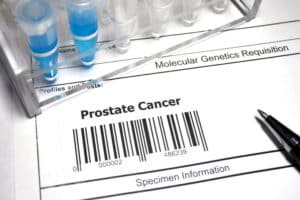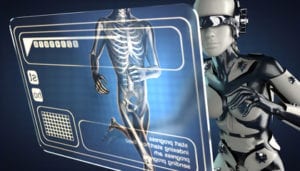Prostate Cancer FAQs

When should I begin regular prostate screening exams?
Some patients falsely think that they may need a prostate exam when they experience unusual symptoms. Cancer screenings of all kinds, including screenings for prostate cancer, are best done when you do not have symptoms. Screenings are based on other factors, including age and family history. Generally, doctors advise men to begin their prostate cancer screenings at age 45. That said, they should begin earlier for men with known risk factors such as having a father, brother, or paternal uncle with the disease.
What can I expect during a prostate screening exam?
There are two parts to the prostate screening. One is a blood test that measures prostate-specific antigen, PSA. This is a protein that is produced in the prostate gland. Elevated levels could indicate cancer. The second aspect of the prostate screening is a digital rectal exam. This test allows the doctor to feel the prostate to detect abnormalities. Neither test is particularly uncomfortable, and both take only a minute or two. Men are encouraged to keep a record of their PSA levels so they can be compared from one screening to the next.
While PSA level is an important measure of risk, it is not a definitive indication of prostate cancer. Doctors do not use this test alone to diagnose prostate cancer. Elevated levels could be a result of inflammation, infection, or other origins. PSA may be influenced by certain medications, obesity, even exercise. So, while important to measure, the PSA measurement is only one aspect of a thorough prostate cancer screening.
Can I reduce my risk for prostate cancer?
More research is needed to better understand the preventative nature of lifestyle on prostate cancer. Some say that there is little data to draw from. However, the data that is available indicates that diet could play a role. Countries in which men consume more fish and less fat show lower prostate cancer numbers compared to countries in which the Western diet rules. If you are interested in following a prostate-healthy lifestyle, experts suggest eating less red meat and fats and increasing the intake of fresh fruits and vegetables.
UT Urology has multiple offices to serve you. Contact us today to schedule your prostate cancer screening at a Chattanooga facility near you.



 According to research, as many as half of the men aged 51 to 60 will develop BPH or benign prostatic hyperplasia. An enlarged prostate. The good news about BPH lies in that one little, yet the uber-important word “benign.” To have an enlarged prostate doesn’t indicate that you have prostate cancer, or that your risk for cancer is substantially higher. It can mean that you have to face a few unpleasant symptoms, though.
According to research, as many as half of the men aged 51 to 60 will develop BPH or benign prostatic hyperplasia. An enlarged prostate. The good news about BPH lies in that one little, yet the uber-important word “benign.” To have an enlarged prostate doesn’t indicate that you have prostate cancer, or that your risk for cancer is substantially higher. It can mean that you have to face a few unpleasant symptoms, though. Prostate health is an important matter for men of a certain age. It is widely recognized that prostate problems may occur as a man ages. Conditions such as prostatitis or benign prostatic hyperplasia (BPH) are enough to incite worry that prostate cancer may be right around the corner. At UT Erlanger Urology, we believe in the power of partnership. Our patients’ peace of mind is important to us, and we foster that with clear information and personal care. Here, we want to discuss a few ways that research suggests men may support long-term
Prostate health is an important matter for men of a certain age. It is widely recognized that prostate problems may occur as a man ages. Conditions such as prostatitis or benign prostatic hyperplasia (BPH) are enough to incite worry that prostate cancer may be right around the corner. At UT Erlanger Urology, we believe in the power of partnership. Our patients’ peace of mind is important to us, and we foster that with clear information and personal care. Here, we want to discuss a few ways that research suggests men may support long-term  Surgical medicine has transformed over the past several years as a result of innovative developments. In our Chattanooga urology practice, it has been the advent of robotic surgery that has significantly impacted our approach to urologic care. Specifically, minimally invasive robotic surgery has improved outcomes in the treatment of urological cancers.
Surgical medicine has transformed over the past several years as a result of innovative developments. In our Chattanooga urology practice, it has been the advent of robotic surgery that has significantly impacted our approach to urologic care. Specifically, minimally invasive robotic surgery has improved outcomes in the treatment of urological cancers. Being diagnosed with prostate cancer, or even being concerned about an elevated risk, creates inordinate amounts of stress on the average guy. Here, we want to discuss some of the points of interest from experts in the field. This information is intended to help you navigate your journey through diagnosis, treatment, and recovery.
Being diagnosed with prostate cancer, or even being concerned about an elevated risk, creates inordinate amounts of stress on the average guy. Here, we want to discuss some of the points of interest from experts in the field. This information is intended to help you navigate your journey through diagnosis, treatment, and recovery.